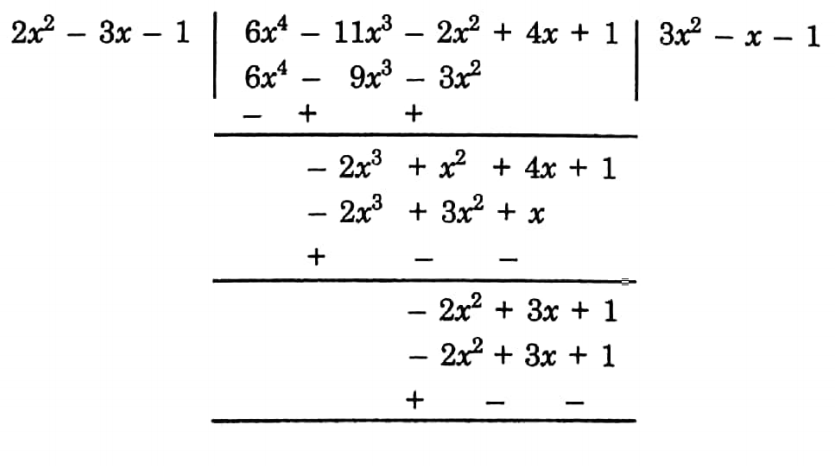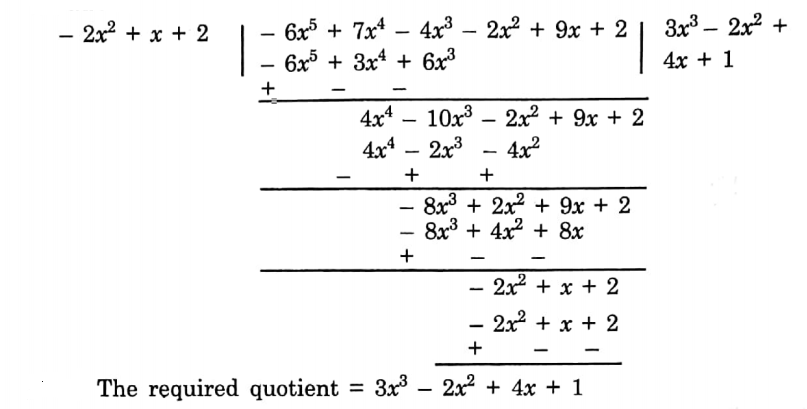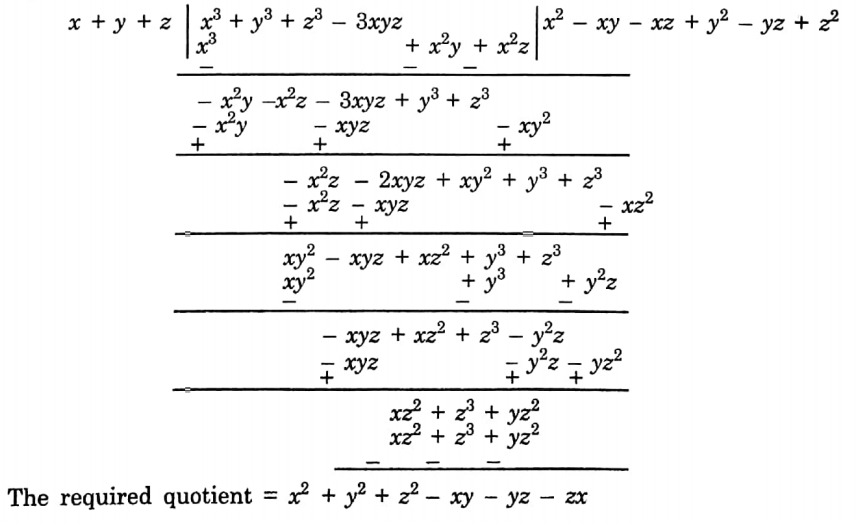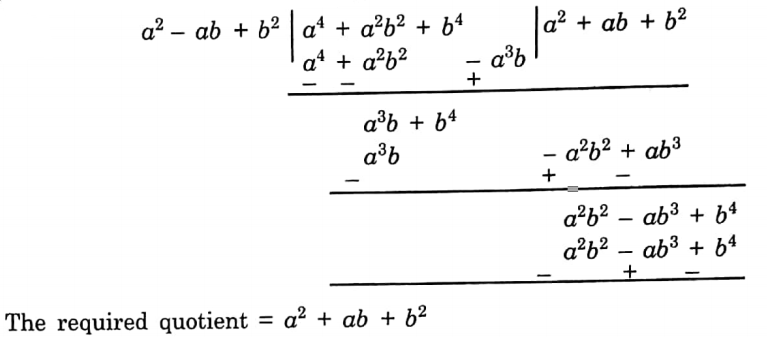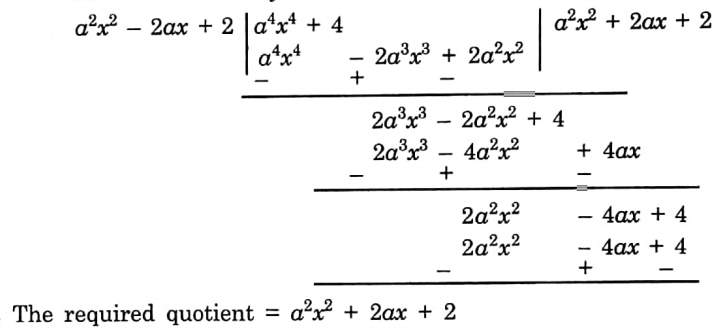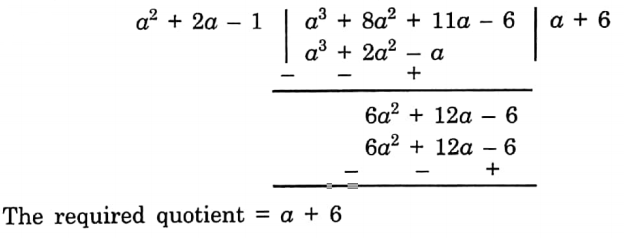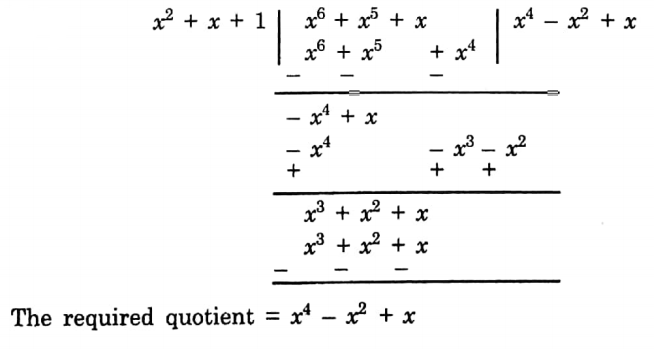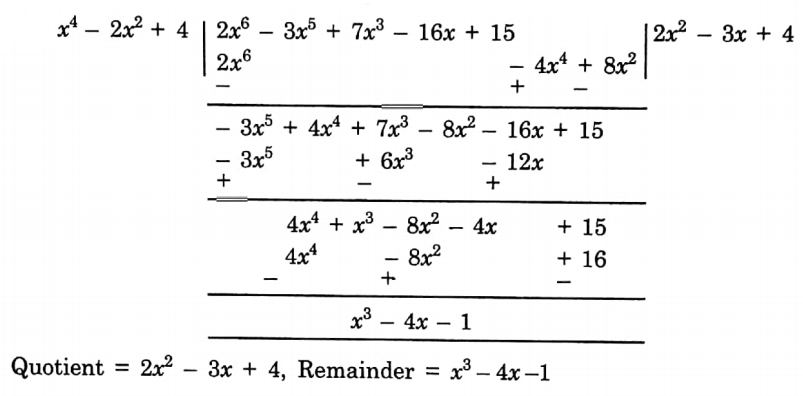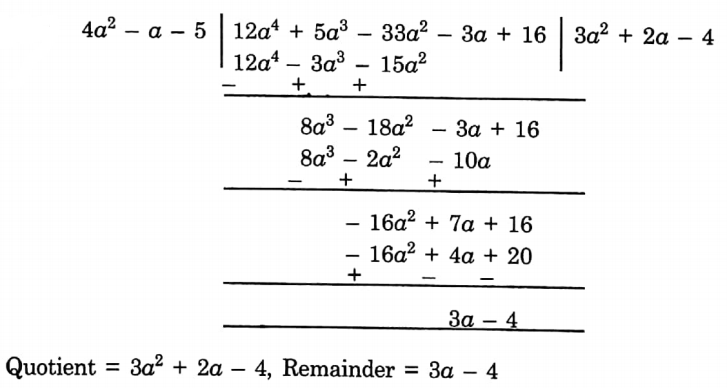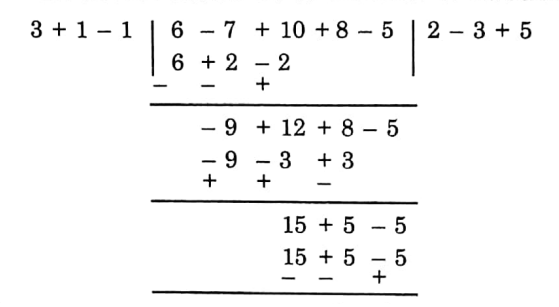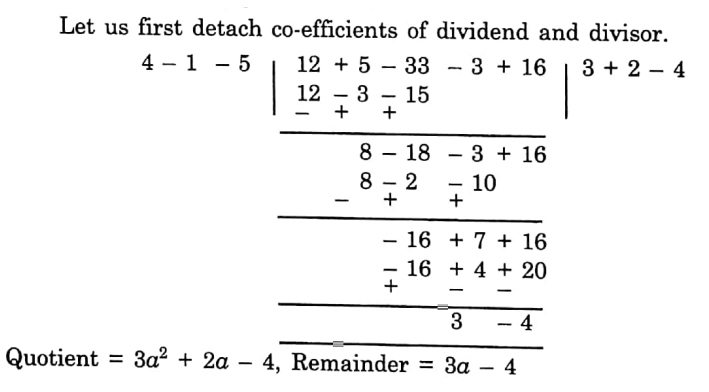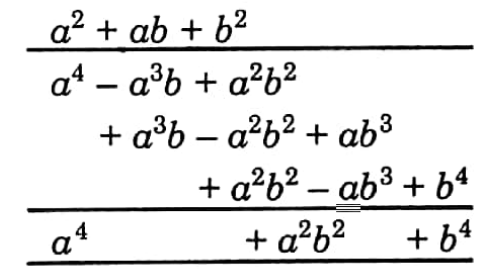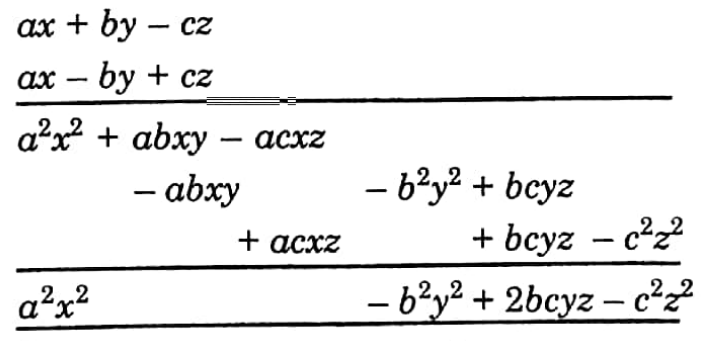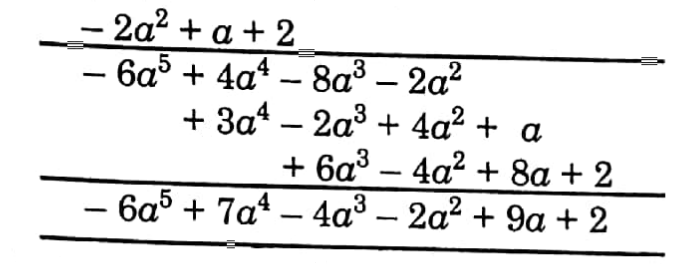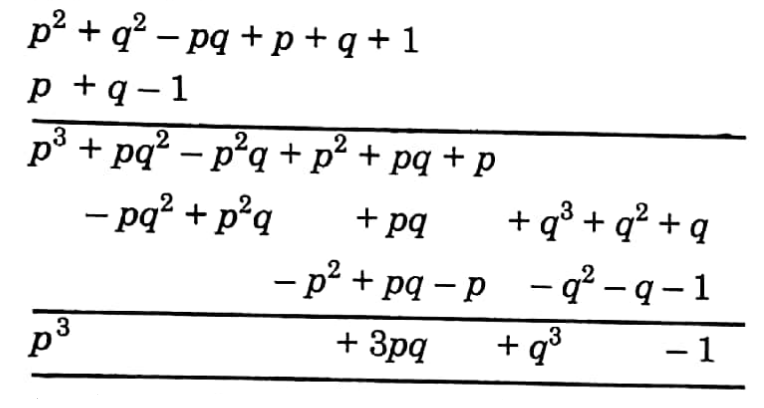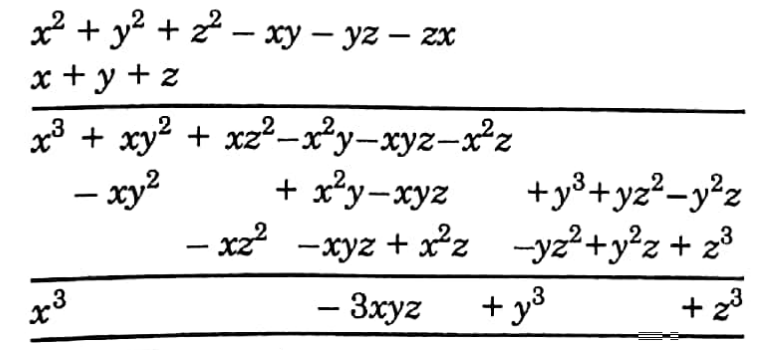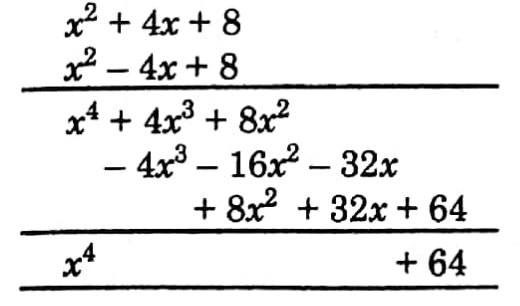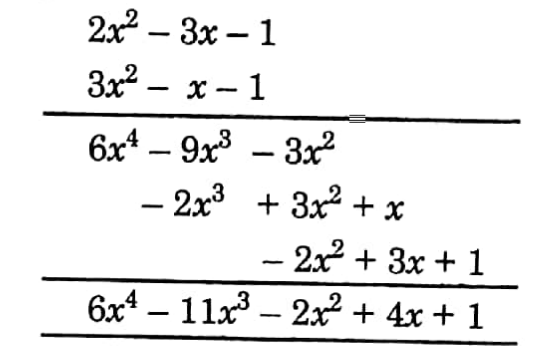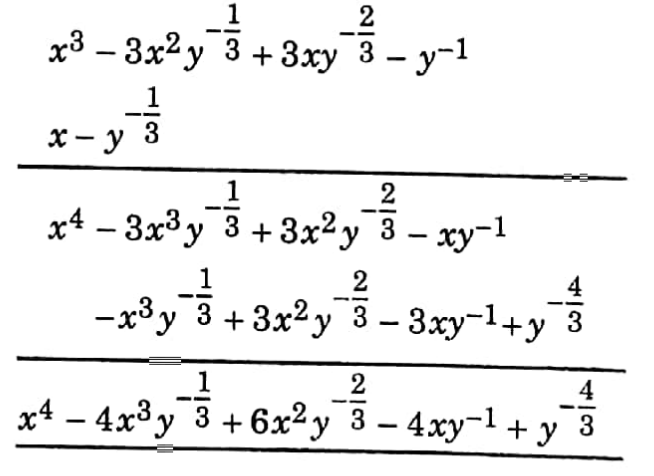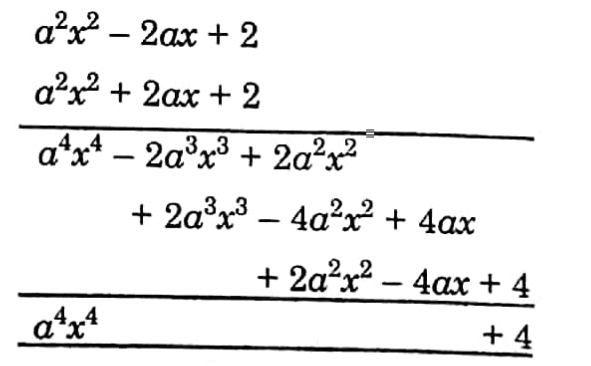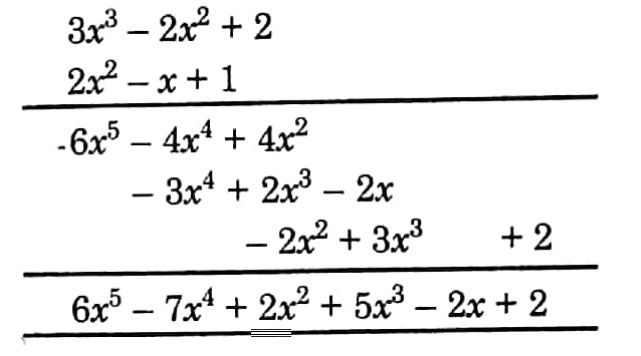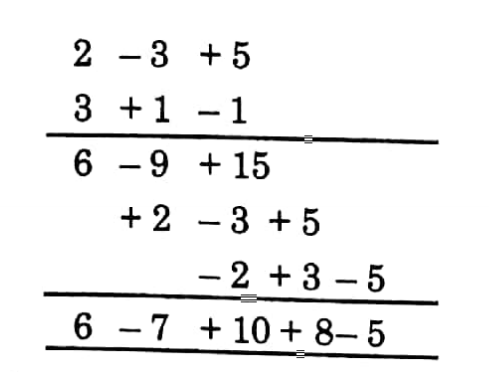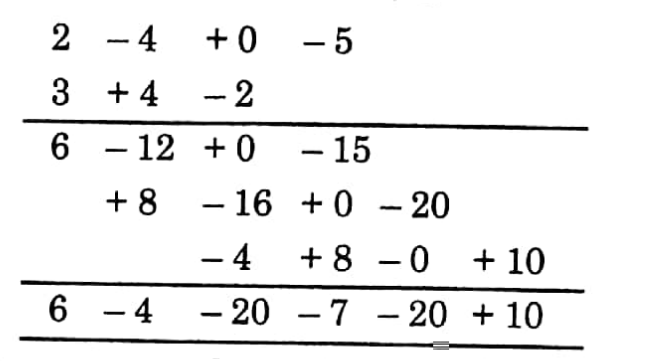Chapter 6 Time and Work
Time and Work Introduction
Some people perform a certain amount of work in a specific time. So there are three elements connected with the problems with time and work which are
1. The number of men,
2. The amount of work and
3. The span of time.
Relation between the amount of work and the span of time
If the number of men is not altered then more time will be required if the number of work increases. Let 20 persons take 15 days to plough 10 bighas of land. We have to determine the time required to plough 20 bighas of land by those 20 persons.
Here, the number of persons is unaltered. Therefore, more time will be required if the number of work increases, and less time will be required if the amount of work decreases.
Hence, in this case
20 persons plough 10 bighas of land in 15 days
’20 persons plough 1 bigha of land in 15/10 days
20 persons plough 20 bighas of land in 15/10 x 20 days
= 30 days.
Relation between the number of persons and the amount of work
If the span of time remains unaltered then more work will be done if the number of persons is increased. Let in 20 days, 10 persons can plough 15 bighas of land. We have to determine the number of bighas of land that 20 persons can plough in 20 days.
Read And Learn More WBBSE Solutions For Class 8 Maths
Here the number of days is unaltered. Therefore, if the number of persons is increased the amount of work will also increase, and if the number of persons is decreased the amount of work will also decrease.
Hence, in this case, in 20 days
10 persons can plough 15 bighas of land
1 person can plough 15/10 bighas of land
20 persons can plough 15/10 x 20 bighas of land
= 30 bighas of land
Relation between the number of persons and span of time
If the amount of work is unaltered then less time will be required if the number of persons is increased. Let, 20 persons take 30 days to plough 20 bighas of land. We have to determine the time required by 40 persons to plough 20 bighas of land.
Here, the amount of work is unaltered. Therefore, less time will be required if the number of persons is increased and more time will be required if the number of persons is decreased.
Therefore, in this case, to plough 20 bighas of land—
20 persons take 30 days
1 persons take 30 x 20 days
40 persons take 30 x 20 / 40 days
= 15 days
Relation among a number of persons, amount of work, and span of time
From the above discussion, we see that,
1. When a number of persons are unaltered, the amount of work is proportional to the span of time.
2. When the span of time is unaltered, the amount of work is proportional to the number of persons.
3. When the amount of work is unaltered, the number of persons is inversely proportional to the span of time. We may express the above relationships with the help of the following diagram.
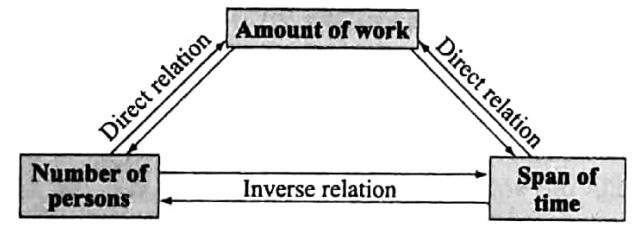
Important information related to time and work
1. If a person can finish a piece of work in n days, then the work done by the person in 1 day = 1/n th part of the work.
2. If a person completes 1/n th part of a work in one day, then the time taken by the person to finish complete work = n days.
3. If A is n times as good a worker as B, then the Ratio of work done by A and B at the same time = n: 1.
4. If the number of workers to do a certain work is changed in the ratio m: n, then the ratio of time taken to finish the work changes in the ratio n: m.
5. One day’s work = 1/ Number of days required to complete the work
6. Number of days required to complete a work = 1/one day’s work
7. Number of days required to do a total work to do certain work = total work today / one day’s work
Some problems with time and work
Example 1
A cultivator can plough 6 bighas of land in 12 days. How many bighas of land will he plough in 36 days?
Solution :
Given:
A cultivator can plough 6 bighas of land in 12 days.
Number of days Measure of land
12 6 bighas
36 x bighas (say)
Since, the measure of land ploughed is directly proportional to the number of days,
∴ 12/36 = 6/x
or, 12 x x = 36 x 6
or, x = 36 x 6 / 12
= 18
18 bighas of land.
Alternative method :
In 12 days the cultivator can plough 6 bighas of land
In 1 day the cultivator can plough 6/12 bighas of land
In 36 days the cultivator can plough
6/12 x 36 bighas of land = 18 bighas of land.
Example 2
A carpenter can prepare 3 almirahs in 4 days. How many days will it take to prepare 12 almirahs?
Solution :
Given:
A carpenter can prepare 3 almirahs in 4 days.
Number of almirahs Number of days
3 4
12 x (say)
Since the number of almirahs prepared is directly proportional to the number of days.
∴ 3/12 = 4/x
or, 3x = 12 x 4
or,
x = 12 x 4 / 3
= 16
He will take 16 days.
Alternative method :
That carpenter can make,
3 almirahs in 4 days
1 almirah in 4/3 days
12 almirahs in 4/3 x 12 days
= 16 days.
16 days will it take to prepare 12 almirahs
Example 3
6 men can do work in 30 days. In how many days will 20 men do the work?
Solution :
Given:
6 men can do work in 30 days.
Number of men Number of days
6 30
20 x (say)
Since the number of days is inversely propor�tional to the number of men
∴ 20/6 = 30/x
or, 20 x x = 30 x 6
or, x = = 9
They will do the work in 9 days.
Alternative method :
6 men can do the work in 30 days
1 man can do the work in 30 x 6 days
20 men can do the work in 30 x 6 / 20
= 9 days.
In 9 days will 20 men do the work
Example 4
A man can make 500 machine parts in 4 days working 7 hours per day. If he works for 7 days at the rate of 6 hours per day, then how many machine parts will be produced?
Solution :
Given:
A man can make 500 machine parts in 4 days working 7 hours per day. If he works for 7 days at the rate of 6 hours per day.
Total time in 4 days at the rate of 7 hours per day = (7×4) hours = 28 hours.
Total time in 7 days at the rate of 6 hours per day = (7×6) hours = 42 hours.
Total time Number of machine parts
28 hours 500
42 hours x (say)
Since, the number of machine parts produced is directly proportional to the total time,
∴ 28/42 = 500/x
or, 28 x x = 500 x 42
or, x = 500 x 42 / 25
= 750
750 machine parts will be produced.
Alternative method :
That man can make
In 28 hours, 500 machine parts
In 1 hour, 500/28 machine parts
In 42 hours, 500 x42 / 28 machine parts
= 750 machine parts.
Example 5
15 people can finish work in 10 days working 8 hours per day. In how many days will 25 persons finish the work if they work 6 hours per day?
Solution :
Given:
15 people can finish work in 10 days working 8 hours per day.
Number of persons Number of Hours per day days
15 8 10
25 6 x (say)
Since the number of days is inversely proportional to the number of persons and is also inversely proportional to the number of hours per day, therefore,
\(\left.\begin{array}{rl}
25: 15 \\
6 & : 8
\end{array}\right\}:: 10: x\)
or, x 15 x 8 x 10 / 25 x 6
= 8
They will finish the work in 8 days.
Alternative method :
15 persons, working 8 hours a day can finish the work in 10 days
1 person, working 8 hours a day can finish the work in 10 x 15 days
1 person, working 1 hour a day can finish the work in 10 x 15 x 8 days
25 persons, working 1 hour a day can finish the work in 10 x 15 x 8 / 25 days
25 persons, working 6 hours a day can finish the work in 10 x 15 x 8 / 6 x 25days
= 8 days
Example 6
Ram and Shyam individually can do work in 6 hours and 8 hours respectively. How long will it take to finish the work if they work together?
Solution :
Given:
Ram and Shyam individually can do work in 6 hours and 8 hours respectively.
Ram can finish the work in 6 hours.
In 1 hour Ram can do 1/6 part
Shyam can finish the work in 8 hours
In 1 hour Shyam can do 1/8 part.
Thus, in 1 hour Ram and Shyam can do (1/6 + 1/8) part
= 4+3 / 24 part
= 7/24 part
Now, Ram and Shyam can do 7/24 part of the work in 1 hour
1 part of the work in 24/7 hours = 3 3/7 hours
They will finish the work in 3 3/7 hours.
Example 7
A and B individually complete a work in 10 hours and 12 hours respectively. If they do work together then in how many hours they will complete the work ?
Solution :
Given :
A and B individually complete a work in 10 hours and 12 hours respectively.
A can finish the work in 10 hours
In 1 hour A can do 1/10 part
B can finish the work in 12 hours
In 1 hour B can do 1/12 of part
Thus, in 1 hour A and B together can do (1/10 + 1/12) part
= 6+5 / 60 part
= 11/60 part
Now, A and B can do
11/60 part of the work in 1 hour
∴ 1 part of the work in 60/11 hour
= 5 5/11 hours
They will complete the work in 5 5/11 hours.
Example 8
Rahim and Karim can finish the work in 3 days. They worked together for 2 days and after 2 more days. In how many days can Karim alone finish the work?
Solution :
Given:
Rahim and Karim can finish the work in 3 days. They worked together for 2 days and after 2 more days.
In 3 days Rahim and Karim can do 1 part
In 1 day Rahim and Karim can do 1/3 part
In 2 days Rahim and Karim can do 2/3 part
After 2 days the part of the work left = (1 – 2/3)
= 1/3 and Rahim alone can do this work in 2 days.
Now, in 2 days Rahim can do 1/3 part
in 1 day Rahim can do 1/6 part
In 1 day Karim alone can do (1/3 – 1/6) part
= 2-1 / 6
= 1/6 part of the work.
∴ Karim alone can do 1/6 part of the work in 1 day
Karim alone can do 1 part of the work in 6 days
Karim alone can finish the work in 6 days.
Example 9
Ram, Shyam, and Jadu will paint the windows of a house. Ram, Shyam, and Jadu separately can complete the work in 12, 4 and 6 days. If they do the work together, then how many days they will take to complete the work?
Solution :
Given:
Ram, Shyam, and Jadu will paint the windows of a house. Ram, Shyam, and Jadu separately can complete the work in 12, 4 and 6 days
In 12 days Ram can do 1 part
In 1 day Ram can do 1/12 part
In 4 days Shyam can do 1 part
In 1 day Shyam can do 1/4 part
In 6 days Jadu can do 1 part
In 1 day Jadu can do 1/6 part
∴ Ram, Shyam, and Jadu together can do in one day = ( 1/12 + 1/4 + 1/6) part
= 1+3+2 /12 part
= 6/12 part
= 1/2 part.
∴ The three together can do 1/2 part in 1 day
∴ They together can do 1 part in 2 days
They will complete the work in 2 days
Example 10
The work of 2 men is equal to that of 4 women. 4 men and 7 women can do work in 40 days. How long will 12 men and 6 women take to finish the work?
Solution :
Given:
The work of 2 men is equal to that of 4 women. 4 men and 7 women can do work in 40 days.
Work of 2 men = work of 4 women
Work of 1 men = work of 4/2 women
= work of 2 women
∴ Work of 4 men and 7 women
= work of (8+7) women
= work of 15 women.
Again, the work of 12 men and 16 women
= work of (24+6) women
= work of 30 women
Now, 15 women can do the work in 40 days
1 woman can do the work in 40 x 15 days
3. women can do the work in 40×15 / 30 days
= 20 days
They will finish the work in 20 days.
Example 11
A and B can complete a work separately in 20 and 25 days respectively. After 10 days of their working together, they both left. C came and completed the remaining work in 3 days. If C alone would do the work, how many days he would take to complete the work?
Solution:
Given:
A and B can complete a work separately in 20 and 25 days respectively.
After 10 days of their working together, they both left. C came and completed the remaining work in 3 days.
A and B together in 1 day can do (1/20 + 1/25) part
= 5+4 / 100 part
= 9/100 part
∴ A and B together in 10 days can do = 9/100 x 10 part
= 9/10 part
∴ C does (1 – 9/10) part
= 1/10 part of the work
C can do 1/10 part in 3 days
∴ C can do 1 part in 3 x 10 days
= 30 days
C can complete the work in 30 days.
Example 12
A, B, and C individually can do a piece of work in 10 days, 12 days, and 15 days respectively. They did the work alone for 1 day individually. How much work will be left after that?
Solution :
Given:
A, B, and C individually can do a piece of work in 10 days, 12 days, and 15 days respectively. They did the work alone for 1 day individually.
In 10 days A can do 1 part
In 1 day A can do 1/10 of part
In 12 days B can do 1 part
In 1 day B can do 1/12 part
In 15 days C can do 1 part
In 1 day C can do 1/15 of part
If A, B, and C work alone for 1 day individually, then the total work performed
= (1/10 + 1/12 + 1/15) part
= (6 + 5 + 4 / 60) part
= 15/60 part
= 1/4 part
∴ Remaining work = (1-1/4) part
= 3/4 part
3/4 part of the work will be left
Example 13
A and B can do a piece of work in 10 days and 15 days respectively. An alone did the work for 4 days and then B alone did it for 5 days. Thereafter C did the remaining work in 8 days. How long will they take to complete the work together?
Solution :
Given:
A and B can do a piece of work in 10 days and 15 days respectively.
An alone did the work for 4 days and then B alone did it for 5 days.
Thereafter C did the remaining work in 8 days.
In 10 days A can do 1 part
In 1 day A can do 1/10 part
In 4 days A can do 4/10 of part
= 2/5 part
In 15 days B can do 1 part
In 1 day B can do 1/15 part
In 5 days B can do 5/15 part
= 1/3 part
Therefore, A and B do (2/5 + 1/3) part
= (6+5 / 15) part
= 11/15 part of the work.
∴ Remaining work = ( 1 – 11/15) part
= 4/15 part
In 8 days C can do 4/15 of part
In 1 day C can do 4/ 15 x 8 part
= 1/30 part
Hence, in 1 day A, B, and C can do ( 1/10 + 1/15 + 1/30 ) part
= (3 + 2 + 1 / 30 ) part
= 6/30 part
= 1/5 part
.’. A, B, and C together can do 1/5 part in 1 day
A, B, and C together can do 1 part in 5 days.
They will complete the work in 5 days.
Example 14
A, B, and C can do a piece of work in 10 days, 12 days, and 15 days respectively. They started the work jointly. After 3 days B became ill and went away. How long will A and C take to finish the work?
Solution :
Given:
A, B, and C can do a piece of work in 10 days, 12 days, and 15 days respectively.
They started the work jointly. After 3 days B became ill and went away.
In 1 day A, B, and C can do
(1/10 + 1/12 + 1/150part
= (6+5+4 / 40)part
= 15/60 part
= 1/4 part
∴ In 3 days A, B, and C can do 3/4 part.
∴ Remaining work = (1-3/4) part
= 1/4 part
Also, in 1 day A and C can do (1/10 + 1/15) part
= (3+2 / 30) part
= 5/30 part
= 1/6 part
Hence, A and C can do 1/6 part in 1 day
A and C can do 1 part in 6 days
A and C can do 1/4 part in 6/4 days
= 3/2
= 1 1/2 days.
A and C will do the remaining work in 1 1/2 days.
Example 15
Ram and Shyam can complete a work in 20 days, Shyam and Jadu can complete that work in 15 days, and Ram and Jadu can complete that work in 20 days. How long will they take to do the work together? If Ram, Shyam, and Jadu work individually then calculate the time that will be taken by each of them separately.
Solution :
Given:
Ram and Shyam can complete a work in 20 days, Shyam and Jadu can complete that work in 15 days, and Ram and Jadu can complete that work in 20 days.
Ram and Shyam together can do it in 1 day 1/20 part
Shyam and Jadu together can do in 1 day 1/15 part
Ram and Jadu together can do in 1 day 1/20 part
2 x (Ram + Shyam + Jadu) together can do in 1 day
= (1/20 + 1/15+ 1/20) part
= 3+4+3 / 60 part
= 10/60 part
= 1/6 part
∴ Ram, Shyam, and Jadu together can do in 1 day 1/12 part
They do 1/12 part in 1 day
They do 1 part in 12 days
Now, in 1 day, Ram can do (1/12 – 1/15) part
= 5 – 4 /60 part
= 1/60 part
Ram can do 1/60 part in 1 day
Ram can do 1 part in 60 days
In 1 day, Shyam can do (1/12 -1/12) part
= 5-3 / 60 part
= 2/60 part
= 1/30 part
Shyam can do 1/30 part in 1 day
Shyam can do 1 part in 30 days
In 1 day Jadu can do (1/12 – 1/20 )part
= 1/30 part
Jadu can do 1/30 part in 1 day
Jadu can do 1 part in 30 days
The three together will do the work in 12 days.
Ram alone in 60 days,
Shyam alone in 30 days
and Jadu alone in 30 days.
Example 16
Ram, Shyam, and Jadu individually can complete a work in 5, 6, and 10 days respectively. They started doing the work together. After 2 days Ram went away. Find in how many days Shyam and Jadu will complete the remaining work.
Solution :
Given:
Ram, Shyam, and Jadu individually can complete a work in 5, 6, and 10 days respectively. They started doing the work together.
After 2 days Ram went away.
In 1 day Ram, Shyam, and Jadu can do (1/5 + 1/6 + 1/10) part
= 6+5+3 / 30 part
= 14/30 part
= 7/15 part
∴ In 2 days Ram, Shyam, and Jadu can do the 14/15 part.
∴ Remaining work = (1 – 14/15) part
= 1 1/5 part
Shyam and Jadu can do in 1 day (1/6 + 1/10) part
= (5+3 / 30)part
= 8/30 part
= 4/15 part
Shyam and Jadu can do 4/15 part in 1 day
Shyam and Jadu can do 1 part in 15/4 days
1/15 part in 15/4 x 1/15 days
= 1/4 days
Shyam and Jadu will complete the remaining work in 1/4 day.
Example 17
Ram and Shyam can do the work individually in 10 days and 15 days respectively. At first, Ram alone worked for 4 days, then Shyam alone worked for 5 days and left. Jadu came and completed the remaining work in 4 days. If Ram, Shyam, and Jadu would work together find in how many days they would complete the work.
Solution :
Given:
Ram and Shyam can do the work individually in 10 days and 15 days respectively.
At first, Ram alone worked for 4 days, then Shyam alone worked for 5 days and left.
Jadu came and completed the remaining work in 4 days.
In 10 days Ram can do 1 part
In 1 day Ram can do 1/10 part
In 4 days Ram can do 4/10 part = 2/5 part
In 15 days Shyam can do 1 part
In 1 day Shyam can do 1/15 part
In 5 days Shyam can do 5/15 part = 1/3 part
Ram and Shyam together do (2/5 + 1/3) part
= 6+5 / 15 part
= 11/15 part
∴ Jadu does(1 – 11/15)part
= 4/15 part
In 4 days Jadu can do 4/15 part
∴ In 1 day Jadu can do 1/15 part
In 1 day Ram, Shyam, and Jadu can do (1/10 + 1/15 + 1/15) part
= (3+2+2 / 30) part
The three together can do 7/30 part in 1 day
The three together can do 1 part in 30/7 days
= 4 2/7 days
They will complete the work in 4 3/7 days.
Example 18
A and B can do a piece of work in 6 days, B and C can do it in 9 days and A and C can do it in 12 days. How long will it take to do the work separately?
Solution :
Given:
A and B can do a piece of work in 6 days, B and C can do it in 9 days and A and C can do it in 12 days.
A and B together can do in 1 day 1/6 part
B and C together can do in 1 day 1/9 part
A and C together can do in 1 day 1/12 part
2 x (A, B, and C)together in 1 day do (1/6 + 1/9 +1/12) part
= 6+4+3 / 36 part
= 13/36 part
A, B, and C together in 1 day do 13/72 part = 13-8 / 72 part
= 5/72 part
∴ Adoes the work in 72/5 days = 14 2/5 days
In 1 day B does (13/72 – 1/12) part
= 13-6/72 part
= 7/72 part
∴ B does the work in 72/7 days = 10 2/7 days
In 1 day C does (13/72 – 1/6)part
= 13-12 /72part
= 1/72 part
C does the work in 72 days.
A will do the work in 14 2/5 days, B in 10 2/7 days, and C in 72 days.
Example 19
A and B together can do a piece of work in 20 days. They worked together for 15 days and then B went away. A finished the remaining work in 12 days. How many days would A and B take if they worked individually?
Solution:
Given:
A and B together can do a piece of work in 20 days.
They worked together for 15 days and then B went away.
A finished the remaining work in 12 days.
A and B together can do the work in 20 days
In 20 days they can do 1 part
In 1 day they can do 1/20 part
In 15 days they can do 15/20 part = 3/4 part
∴ Remaining work = (1 – 3/4) part
= 1/4 part
A can-do 1/4 part in 12 days
∴ A can do 1 part in 12 x 4 days = 48 days
B can do in 1 day(1/20 – 1/48) part
= 12-5 / 240 part
= 7/240 part
∴ B can do the work in 240/7 days = 34 2/7 days
A can do the work in 48 days and B can do the work in 34 2/7 days.
Example 20
A and B together can do a piece of work in 8 days. They worked together for 5 days and then B went away. The work was finished after 6 more days. In how many days will B alone finish the work?
Solution:
Given:
A and B together can do a piece of work in 8 days.
They worked together for 5 days and then B went away. The work was finished after 6 more days.
A and B together can do the work 8 days
In 8 days they do 1 part
In 1 day they do 1/8 part
In 5 days they do 5/8 part
∴ Remaining work = ( 1- 5/8)part
= 3/8 part
A can-do 3/8 part work in 6 days
∴ A can do 1 part work in 6 x 8/3 days
= 16 days
A and B together can do in 1 day 1/8 part
A alone can do in 1 day 1/16 part
∴ B alone can do in 1 day (1/8 – 1/16) part
= (2-1 / 16) part
= 1/16 part
∴ B alone can do the work in 16 days
B alone can do the work in 16 days
Pipes and Cisterns
A cistern or water tank has two types of pipes connected to it one which fills it up called the inlet and the other which empties it out called the outlet.
Since the nature of the work of the two pipes is exactly opposite, hence the work done by the inlet is considered positive whereas the work done by the outlet is considered negative. If an inlet fills up a cistern in n hours, then in 1 hour it will fill up 1/n th part of the cistern.
If an outlet empties a full cistern in m hours, then in 1 hour 1/m th part of the cistern will be emptied out by it.
Some problems with pipes and cisterns
Example 1
There are two pipes for taking water from the municipality water tank. The tank becomes empty in 4 hours by the two pipes separately. If both the pipes remain open calculate when the full tank will be empty.
Solution:
Given:
There are two pipes for taking water from the municipality water tank. The tank becomes empty in 4 hours by the two pipes separately.
By the two pipes in 1 hour can be emptied (1/4 + 1/4) part
= 1/2 part
∴ 1/2 part can be emptied in 1 hour
1 part
can be emptied in 2 hours
The full tank will be empty in 2 hours.
Example 2
There are three pipes in a tank. With these 3 pipes separately the tank can be filled up in 18, 21 and 24 hours respectively,
(a) If the 3 pipes remain open together find when the tank will be filled with water,
(b) If the first two pipes would remain open find the time to fill up the tank with water,
(c) If the last two pipes would remain open find the time to fill up the tank.
Solution :
Given:
There are three pipes in a tank. With these 3 pipes separately the tank can be filled up in 18, 21 and 24 hours respectively,
1. If the 3 pipes remain open together then in 1 hour (1/18 + 1/21 + 1/24) part
= 20+24+21 / 504 part
= 73/504 part is filled.
∴ 73/504 part is filled in 1 hour
1 part is filled in 504/73 hours
= 6 66/73 hours
2. If the first two pipes remain open together then in 1 hour (1/18 + 1/21)part
= 7+6 / 126 part
= 13/126 part is filled
∴ 13/126 part is filled in 1 hour
1 part is filled in 126/13 hours
= 9 9/13 hours
3. If the last two pipes remain open together then in 1 hour(1/24 +1/24) part
= 8+7 / 168 part
= 15/168 part is filled.
15/168 part is filled in 1 hour
1 part is filled in 168/15 hours
= 11 3/15 hours
= 11 1/5 hours
Example 3
The tank of a house can be filled up in 30 minutes by the municipality water supply pipe. All household work can be done by opening the all pipes in 4 hours. If one day the water supply pipe remains open for 25 minutes, calculate how long work can be done with that water?
Solution :
Given:
The tank of a house can be filled up in 30 minutes by the municipality water supply pipe. All household work can be done by opening the all pipes in 4 hours. If one day the water supply pipe remains open for 25 minutes.
By the water of 30 minutes, work can be done for 4 hours
By the water of 1-minute work can be done for 4/30 hours
By the water of 25 minutes, work can be done for 4/30 x 25 hours
= 10/3 hours
= 3 1/3 hours
=3 hours 20 minutes
3 hours 20 minutes work can be done.
Example 4
The first and second pipes of a tank can fill it in 8 hours and 10 hours respectively. Both the pipes remained open together for 4 hours. What part of the empty tank will be filled?
Solution :
Given:
The first and second pipes of a tank can fill it in 8 hours and 10 hours respectively. Both the pipes remained open together for 4 hours.
By the first and the second pipe, in 1 hour (1/8 + 1/10)part
= (5+4 / 40) part
= 9/40 part of the tank is filled.
∴ In 4 hours, 9/40 x 4 part
= 9/10 part of the tank is filled.
9/10 part of the tank is filled.
Example 5
A cistern can be filled by two taps A and B in 6 minutes and 3 minutes respectively. How long will it take to fill the empty cistern if the two taps are opened simultaneously?
Solution :
Given:
A cistern can be filled by two taps A and B in 6 minutes and 3 minutes respectively.
In 6 min tap A can fill 1 part of the cistern
In 1 min tap A can fill 1/6 part of the cistern
In 3 min tap B can fill 1 part of the cistern
In 1 min tap B can fill 1/3 part of the cistern
∴ In 1 minute, taps A and B can fill (1/6 + 1/3)part
= 1+2 / 6 part
= 1/2 part.
∴ Taps A and B together can fill 1/2 part of the cistern in 1 minute
1 part of the cistern in 2 minutes
The empty cistern will be filled in 2 minutes.
Example 6
A water tank may be filled in 10 minutes by a pipe. Through a hole at the bottom of the tank, the tank may be emptied in 20 minutes. Without closing the hole if the inlet pipe is opened then how long will it take to fill the empty tank?
Solution :
Given:
A water tank may be filled in 10 minutes by a pipe.
Through a hole at the bottom of the tank, the tank may be emptied in 20 minutes.
By the inlet pipe
In 10 minutes, 1 part is filled
In 1 minute, 1/10 part is filled
By the hole at the bottom of the tank
In 20 minutes, 1 part is emptied
In 2 minutes, 1/20 part is employed
Without closing the hole if the inlet pipe is opened
in 1 minute (1/10 – 1/20)part
= 1/20 part is filled.
1/20 part is filled in 1 minute
1 part is filled in 20 minutes
The empty tank will be filled in 20 minutes.
Example 7
Two taps A and B can fill a cistern in 6 minutes and 12 minutes respectively. Tap C can empty it in 8 minutes. If the three taps are opened simultaneously, then how long will it take to fill the empty cistern?
Solution :
Given:
Two taps A and B can fill a cistern in 6 minutes and 12 minutes respectively. Tap C can empty it in 8 minutes. If the three taps are opened simultaneously.
By tap A, in 1 minute, 1/6 part of the cistern is filled.
By tap B, in 1 minute, 1/12 part of the cistern is filled.
By the two taps A and B, in 1 minute, (1/6 +1/12)part
= 3/12 part
= 1/4 part of the cistern is filled.
By tap C, in 1 minute, 1/8 part of the cistern is emptied.
Therefore, if the three taps are in operation simultaneously, then in 1 minute(1/4 – 1/8)part
= 1/8 part is filled.
Therefore, 1/8 part is filled in 1 minute
1 part is filled in 8 minutes
The empty cistern will be filled in 8 minutes.
Example 8
1/4 part of a cistern is empty, and the remaining portion is filled with water. Then two taps A and B are fitted with it. The tap A can fill the cistern in 8 minutes and tap B can empty it in 4 minutes. If the two taps A and B are opened simultaneously, then how long will it take to empty the cistern ?
Solution :
Given:
1/4 part of a cistern is empty, and the remaining portion is filled with water.
Then two taps A and B are fitted with it.
The tap A can fill the cistern in 8 minutes and tap B can empty it in 4 minutes.
1/4 part of the cistern is empty.
∴ (1-1/4)part or 3/4 part is filled with water.
Now, in 1 minute tap B can empty 1/4 part and in 1 minute tap A can fill 1/8 part
∴ If taps A and B are opened simultaneously, then(1/4 – 1/8)part
= 1/8 part is emptied in 1 minute.
1/8 part is emptied in 1 minute
1 part is emptied in 8 minutes
384 part is emptied in 8 x 3/4 minutes
= 6 minutes
The cistern will be empty in 6 munites.
Example 9
A cistern has 3 pipes A, B, and C; A and B can fill it in 3 and 4 hours respectively, and C can empty it in 1 hour. If the pipes be opened in order at 3, 4, and 5 P.M., when will the cistern be empty?
Solution :
Given:
A cistern has 3 pipes A, B, and C; A and B can fill it in 3 and 4 hours respectively, and C can empty it in 1 hour. If the pipes be opened in order at 3, 4, and 5 P.M.
In 1 hour, pipe A can fill 1/3 part, pipe B can fill 1/4 part and pipe C can empty 1 part.
Now, at 5 P.M.
when the pipe C is opened(2 x 1/3 + 1/4)part
= (2/3 + 1/4)part
= (8+3 / 12)part
= 11/112 part of the cistern is filled.
When all the three pipes are in operation, in 1 hour, (1 – 1/3 +1/4) part
= (1 – 7/12)part
= 5/12 part is emptied.
∴ 5/12 part is emptied in an hour
1 part is emptied in 12/5 hours
11/12 part in emptied in 12/5 x 11/12 hours
= 11/5 hours
= 2 hours 12 minutes
Hence, the cistern will be empty for 2 hours 12 minutes after 5 P.M.
i.e., at 7-12 P.M.
The cistern will be empty at 7-12 P.M.
Example 10
A tank has two pipes A and B. A can fill the tank with water in 8 hours and B can empty it in 12 hours. If the pipe A be opened first and the pipes be opened alternatively one at a time for 1 hour each, in how many hours will the tank be filled up ?
Solution :
Given:
A tank has two pipes A and B. A can fill the tank with water in 8 hours and B can empty it in 12 hours.
If the pipe A be opened first and the pipes be opened alternatively one at a time for 1 hour each
In the first hour, pipe A fills 1/8 part of the tank.
In the second hour, pipe A is stopped and pipe B empties 1/12 part of the tank.
Thus in every two successive hours(1/8 – 1/12)part
= (3-2 / 24) part
= 1/24 part of the tank is filled.
This process will continue until there remains a portion of the tank that can be filled by pipe A alone within 1 hour.
Thus, we have to find the time when (1- 1/8) part
= 7/8 part of the tank is filled up.
Now,
1/24 part of the tank is filled in 2 hours
1 part of the tank is filled in 2 x 24 hours
7/8 part of the tank is filled in 2 x 24 x 7/8 hours
= 42 hours
Pipe A fills the remaining | part of
the tank in 1 hour and there is no neces�sity of opening the second pipe after that. .’. The tank will be filled in (42 + 1) hours = 43 hours.
The tank will be filled in 43 hours.
Example 11
There are 3 pipes connected to a cistern. By these three pipes individually the cistern can be filled in 20, 12, and 15 hours respectively. When the cistern was empty the first pipe only was open for some time. After this, the first pipe was closed and the other two pipes were opened simultaneously and the remaining part was filled in 3 hours. How long was the first pipe open?
Solution :
Given:
There are 3 pipes connected to a cistern. By these three pipes individually the cistern can be filled in 20, 12, and 15 hours respectively.
When the cistern was empty the first pipe only was open for some time.
After this, the first pipe was closed and the other two pipes were opened simultaneously and the remaining part was filled in 3 hours.
By the second and the third pipe in 1 hour (1/12 + 1/15)part
= (5+4 / 60)part
= 9/60 part
= 3/20 part is filled.
By the second and the third pipe in 3 hours
3 x 3/20 part
= 9/20 part is filled.
∴ The first pipe fills(1 – 9/20) part = 11/20 part
By the first pipe, 1 part is filled in 20 hours
By the first pipe, the 11/20 part is filled in 20 x 11/20 hours = 11 hours.
The first pipe was open for 11 hours.

